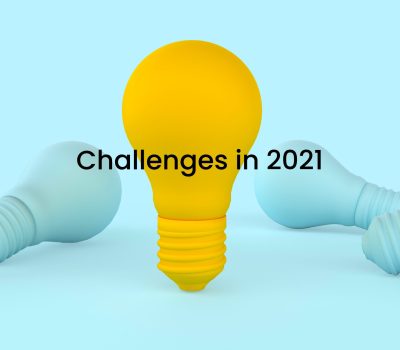
Marketing is constantly evolving, and keeping up with the trends is difficult. But in a post-pandemic world, we have an even bigger burden to carry. The Covid-19 crisis has changed consumer behavior in several key ways. The ability to adapt your brand’s marketing strategy to consumers’ needs will be the difference between flourishing and becoming extinct. We can meet the below challenges and new direction head-on to build a better business.
By Debra Tam
Challenges in 2021
- Budget Cut From Impact of Covid-19 Crisis
COVID-19 pandemic has had lasting effects on businesses around the globe. New findings from the annual Gartner CMO Spend Survey 2021-2022, the marketing budget was cut above 15%. - 6% Growth Rate of Digital Revenue in Hong Kong
According to PwC’s global entertainment and media outlook 2017–2021, the projected compound annual growth rate (CAGR) of 6% to reach US$6.6bn in revenue in 2021. Top 3 segments experiencing highest growth in 2016-2021 are internet video (22.9%), internet advertising (10.2%) and video games (6.6%).

- Privacy And Data Sharing
Entering a cookieless world. Networks are growing more strict with rules around opt-ins, privacy, data sharing and third-party cookies.
New Direction in 2022
Short Video as Important Marketing Strategy
Regarding Video Marketing Statistics 2022, there were 68% people who prefer to watch social media video. Besides, there were 81% of marketers say video has helped them directly increase sales.
People watch an average of 19 hours of online video per week. It is increased 1 hour per week compared to 12 months ago, and a staggering 8.5 hour increase per week across the past 4 years.)
Rising Demand for at-Home Entertainment
The evolution of cloud computing and technology has made work-from-home a reality for a much larger percentage of the workforce, that has also led to an increase in consumer demand for at-home entertainment.
Streaming services like Netflix and Hulu have seen a 10% increase in demand since the pandemic started. Advertising on Hulu or other streaming services like Spotify can get your brand in front of new, captive audiences. Over-The-Top advertising, or OTT, lets brands advertise directly to consumers over the internet through smart devices.
New Targeting Way of Google Topics Targeting in March 2022
Google is a new potential way to target users online without using Federated Learning of Cohorts (FLoC) 3rd party cookies issued by Google. Topics is among Google’s attempts to replace the third-party cookie as a means of identifying people online by striking a balance between preserving people’s privacy and preserving companies’ abilities to buy and sell targeted ads.
Topic targeting lets you place your ads on web pages, apps, and videos about those topics, whether it’s agriculture, music, or something else entirely.
Topic targeting allows your ads to be eligible to appear on any pages on the Display Network or YouTube that have content related to your selected topics. As content across the web changes over time, the pages on which your ads appear can change with it. To display your ads on those pages, simply select one or more topics that you find relevant for your ads.
In conclude, Topics proposes targeting ads to people based on the categories of content they check out online and containing this categorization to the device. Topics proposes a much more general level of categorization.
A web browser like Google’s Chrome will use the Topics API — short for “application programming interface” and effectively the means of using the Topics toolset — to determine a number of topics that best reflect a person’s interests based on their browsing behavior.

Higher Digital Marketing Needs in FinTech and Technology Industry
Government brings promises to invest more in FinTech and technology through its Innovation and Technology Venture Fund of HK$2 billion (US$ 256 million), a portion of which is set aside for marketing.
This investment is leading to various industries developing greater interest in digital marketing strategies, whether they be innovative creative startups, FSCG (fast selling consumer goods) companies or traditional financial institutions.
Trend of Virtual Event & Hybrid Events
When the world shut down in 2020, virtual events were a quick band-aid for in-person events around the globe. Virtual events have become more sophisticated, more engaging, and more dynamic. According to LinkedIn’s State of Virtual Events Report, 75% of event marketers plan to continue running virtual events into next year and beyond.
Hybrid events are also front and center for event marketers, sales teams, and companies. When it comes to hybrid events, hybrid means optimizing the experience for both virtual and in-person audiences, and purposefully creating opportunities for these two audiences to engage.
Marketer increases the entertainment and production value intend to be interactive and entertaining virtual experiences. For examples, create high quality video, invite relevant experts, higher production quality on live streaming, partnership of virtual marketing platform.

Recommendations
Pandemic changes the human life that the marketing strategies is getting to be more digital way, especially the video content and virtual event. Considering the ROI of the marketing budget, there is no more investment on the offline marketing. Moreover, it is important to utilize the omni-marketing tools, it is better to combine 3-4 marketing channels for the leads and traffic.
For the content marketing, video is getting bigger every year through the pandemic effect and short video trend, the marketer will incorporate it reach the audience and the marketing budget will be higher to create higher quality of video content.
For the keywords targeting, people can be more proactive to define their interests, but it causes limit of specificity of ad targeting. The advertisers typically paying more money for more targeted ads, the ad bids is higher and prejudiced.